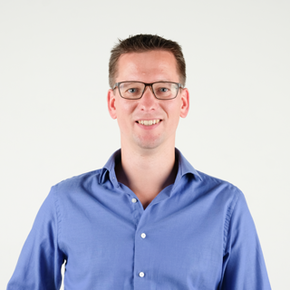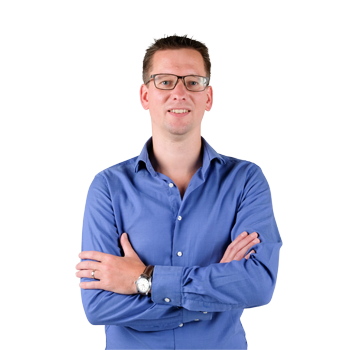To enhance the social safety of passengers and employees, NS is focusing on the efficient deployment of their safety teams. This initiative is part of the 'Being There Where It Matters' program, aimed at optimally positioning the teams where and when they are most needed. CQM supports this by providing insights, forecasts, and an algorithm for automated scheduling, enabling NS to effectively improve social safety.

A safe travel and work environment for customers and employees is a high priority for NS. However, NS also faces the increasing coarsening of society. To continue ensuring social safety, it is crucial for NS to better understand where and when to deploy the safety teams most effectively. The company has therefore made this a strategic program: 'Being There Where It Matters' (in Dutch: Daar Zijn Waar Het Toe Doet (DZWHTD)). "Which locations and times do we need to be present to prevent the emergence of a socially unsafe environment? And what does this mean for our processes, IT, and people?" says NS program manager Bart Bruins Slot. "To make this concrete, we have engaged CQM to help us with data-driven insights."
Data-driven approach
"NS has increasingly become a data-driven organization over the past few years," states CQM's principal consultant Jacob Jan Paulus. "All data sources are consolidated into a single NS data structure, known as the data foundation, from which data can be accessed for various purposes. Our goal was to adopt a more data-driven approach to social safety. Until now, regional safety managers at NS have based their requests for safety team deployments primarily on their knowledge, experience, and the schedule of events in their region. They could typically look ahead by about one week. These requests were then approved by the planners at the national NS Safety & Service department. This 'matchmaking' was mostly manual. For NS and for us, it was clear that a more data-driven approach would bring significant improvements."
Value model
CQM, in collaboration with Argon & Co (formerly M3 Consultancy), began by interviewing stakeholders within NS and analyzing needs and ideas. Subsequently, the WHTD part of the project commenced: 'Where It Matters'. Jacob Jan explains: "Based on historical data, we created a model that predicts the locations and times where socially unsafe situations might occur: hot places and hot times. The expected hotspots are immediately visible in striking colors on the dashboard. This helps regional safety managers combine their experience with data, enabling them to base and substantiate their requests on facts. Moreover, they no longer overlook potentially unsafe situations."
Insights
"Additionally, CQM made our request system more transparent," says Bart Bruins Slot. "In a graphical tool, we can view all requests for safety teams over a ten-week period. It immediately shows the type of insecurity the request addresses and the busy days in the upcoming ten weeks. There is also a screen providing a more detailed six-week overview, showing, for example, how many teams are deployed and the percentage of requests honored by our planners. This makes the entire request process transparent and easy to navigate, allowing our planners and regional safety managers to better anticipate and prioritize what needs to be done and what can be done."
(text continues below the photo)

Planning algorithm
Currently, NS and CQM are working on the DZ part of the DZWHTD project: 'Being There'. Bart comments: "This involves the actual planning of safety team deployment and our ambition to support this with algorithmic solutions. Currently, requests and available safety personnel are entered into the system manually. Our planners then manually match demand and supply in a system that is reaching its end of life. We are considering a new IT system for this, but have not yet made a selection. However, we have already asked CQM to develop the algorithm for automatic planning." Jacob Jan adds: "The considerations that planners must make to dispatch safety teams across the Netherlands form a very complex puzzle. Many implicit rules and agreements, which have developed over time or are based on intuition, are also revealed during this process. This presents an opportunity to formalize or test these implicit agreements."
Pilot
The NS/CQM team recently conducted a pilot with the new planning algorithm. Jacob Jan: "For one day, we replaced the traditional NS planning with the algorithm. NS demonstrated true commitment. In only a few cases the planners did not follow the algorithm's plan exactly. The reasons for these deviations provide input to further refine the algorithm. Thus, we are not only capable of completely automating and optimizing the planning process, but also significantly saving the planners' time. The automatic planning is completed by the algorithm in just three seconds."
Co-creation
The value model and insight screens have been transferred to NS and are now in use. The planning algorithm will also be transferred to NS. "It's an intrinsic part of our work, handing over to the client," says Jacob Jan. "If we do our job well, the client can then continue independently." Bart adds: "CQM personnel are data science experts, extremely driven to solve such puzzles.That’s why we place great trust in them to devise solutions that fit our organization. This is a very pleasant way of working. Meanwhile, we at NS are developing the right competencies to adopt CQM’s solutions and support and develop them long-term. True co-creation, as we are accustomed to from CQM.
Looking to automate and optimize your scheduling?
Do you want greater insight into your planning and the ability to make reliable future forecasts? Are you in search of an effective scheduling algorithm?
Contact Principal Consultant Jacob Jan, who is eager to assist you!
Additionally, if you want to stay updated with the latest news from CQM, follow us on LinkedIn or subscribe to our (Dutch) digital newsletter.


